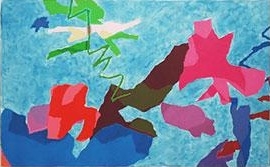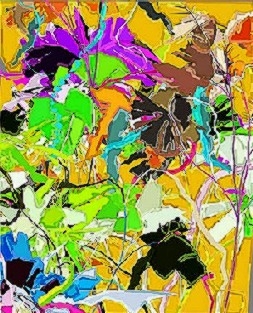Harold Cohen
Position:
Professor Emeritus
Email:
hcohen@ucsd.eduBiography:
Harold Cohen, died at age 87 on April 27 2016, studied painting at the Slade School of Fine Arts in London, and taught there for several years before joining the Visual Arts Department in 1968. His work as a painter has been exhibited widely both in galleries and in major museums. During the 'sixties he represented Great Britain in the Venice Biennale, Documenta 3, the Paris Biennale, the Carnegie International and many other important international shows. He exhibited regularly at the Robert Fraser Gallery in London and the Alan Stone Gallery in New York. After moving to San Diego, Cohen became interested in computer programming and particularly in the field of artificial intelligence. On the basis of his early research he was invited, in 1971, to spend two years at the Artificial Intelligence Laboratory of Stanford University as a Guest Scholar. Much of his work since that time has been concerned with building a machine-based simulation of the cognitive processes underlying the human act of drawing. The resulting ongoing program, AARON, has by now been seen producing original "freehand" drawings in museums and science centers in the US, Europe and Japan: the Los Angeles County Museum, Documenta-6, The San Francisco Museum of Modern Art, the Stedelijk Museum in Amsterdam, the Brooklyn Museum, the Tate Gallery in London and the IBM Gallery in New York among others. He has also exhibited in a number of science centers, including the Ontario Science Center, Pittsburgh's Buhl Center, the Science Museum in Boston and the California Museum of Science and Technology. He has a permanent exhibit in the Computer Museum in Boston, and he represented the US in the Japan World Fair in Tsukuba in 1985. Away from painting in the early '70's, Cohen marked his return with a 100-foot painting for the San Francisco Museum show in 1979. Since then he has executed a number of murals from AARON's drawings: one for the Capitol Children's Museum in Washington, DC, three for the Digital Equipment Corporation, a mosaic mural for the Computer Science Department at Stanford, and one each for the Buhl Science Center and the Ontario Science Center. His recent work has extended AARON's capabilities from drawing to painting; the first of his painting machines was used in an exhibition at the Computer Museum in Boston in 1995. Cohen has delivered invited papers at a number of conferences, including those of the College Art Association, the American Association for the Advancement of Science, the International Joint Conference on Artificial Intelligence, the American Association for Artificial Intelligence, European Conference on Artificial Intelligence and the Tokyo Nicograph Conference. He has lectured about his work at the National Bureau of Standards, the School of the Art Institute of Chicago, the Computer Museum and at many other schools and universities both in the US and the UK. In 1999, he was keynote speaker at two conferences in the UK on Cognition and Creativity, one at Edinburgh University and the other at Loghbboro University. His published writings include "What is an Image?" (Conference Proceedings, IJCAI 1979), "The First Artificial Intelligence Coloring Book," "Off the Shelf," (The Visual Computer, 1986), "Can Computers Make Art?" (proceedings, NICOGRAPH-85), "How to Draw Three People in a Botanical Garden," (proceedings, AAAI-88), "The Further Exploits of AARON, Painter," (Stanford Humanities Review, 1997) and a piece for children in MUSE Magazine, 1998. Writing about his work includes AARON's CODE: Meta-Art, Artificial Intelligence and the Work of Harold Cohen (Pamela McCorduck, Freeman, 1991), full chapters in The Creative Mind, Myths and Mechanisms (Margaret A. Boden, Weidenfeld & Nicholson, 1990), Digital Mantras (Steven Holtzman, MIT Press, 1994), The Universal Machine (Pamela McCorduck, McGraw Hill 1985), another chapter in Machinery of the Mind (George Johnson, Times Books, 1986) and articles in Discover Magazine (Special Edition on Creativity, 1998), Daedelus Magazine (Winter 88), Insight Magazine (March 88), The Chronicle of Higher Education (January 88), Discover Magazine (October 87), and The Whole Earth Review (Summer 87). In recent years, Cohen's work has attracted increasing media attention. Discovery OnLine broadcast the painting machine in action directly from his studio onto the World Wide Web in 1996, and AARON has been featured on a number of TV programs including Beyond 2000, Scientific American Frontiers, a program on programming for the BBC's Open University Series and It'll Never Work, a BBC program for children.
Artwork Images:
Harold Cohen's "At First Light."
